
The Seward Series: In Conclusion
Published November 8th, 2023 by Russ White
Wrapping up our series of articles profiling arts spaces in the neighborhood, we look back at where we've been and consider what actually separates one place from another
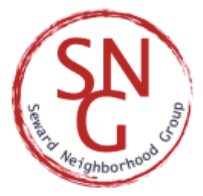
As an artist, I spend a lot of time thinking about walls. They represent an opportunity, a blank canvas’s blank canvas: the place where the art will end up. Either side of a wall will do: the interior — in a home or a gallery or an office — for fragile framed works, or the exterior — out with the elements — for the durable mural (or the ephemeral scribble).
The delineations between neighborhoods in Minneapolis have always felt a bit fluid to me, at least at their edges. There are, however, a few exceptions: the ones that have a wall. The line between Cooper and Howe, for instance, is nonexistent; Logan Park and Sheridan might as well just be “Northeast.” But I used to live a few blocks from the 35W wall dividing Kingfield and Tangletown from Powderhorn and Nokomis — it doesn’t get much more delineated than that. The saying goes that good fences make good neighbors, but strong walls don’t always do the same.
Now I live just a few blocks south of the Greenway that separates Seward from Longfellow, another concrete barrier that serves as a clear division. Only a few roads lead through it (for my money, the footpath tunnel in Brackett Park is the best), creating a network of dead end streets on either side. On Tuesday, after voting at Hiawatha Collegiate High School, my wife and I took a left up 36th Ave to check out a new pair of murals inside the Greenway overpass — two walls freshly adorned with faces, symbols, and colors painted by student artists under the tutelage of Peyton Scott Russell and his organization SPRAYFiNGER. (Coincidentally, the crew of artists are holding a public celebration and dedication of the mural this Saturday from 1 – 4pm.)
These young artists have laid claim to this public space, this small portal between two neighborhoods. It’s a fitting southern entry to a neighborhood I feel like I’m still just getting to know. Coming into Seward from the west on Franklin Ave, you’ll immediately pass the turn-off for Foci and Soomaal House of Art; entering from the north along 26th Ave will take you right past Marjorie Pitz’s Merwyn sculpture emerging from the turf of Triangle Park; and from the east, just over the river, Joan of Art’s Humpty Dumpties are there to greet you with a wave and a smile. The arts in Seward are inescapable, and that’s just scratching the surface.
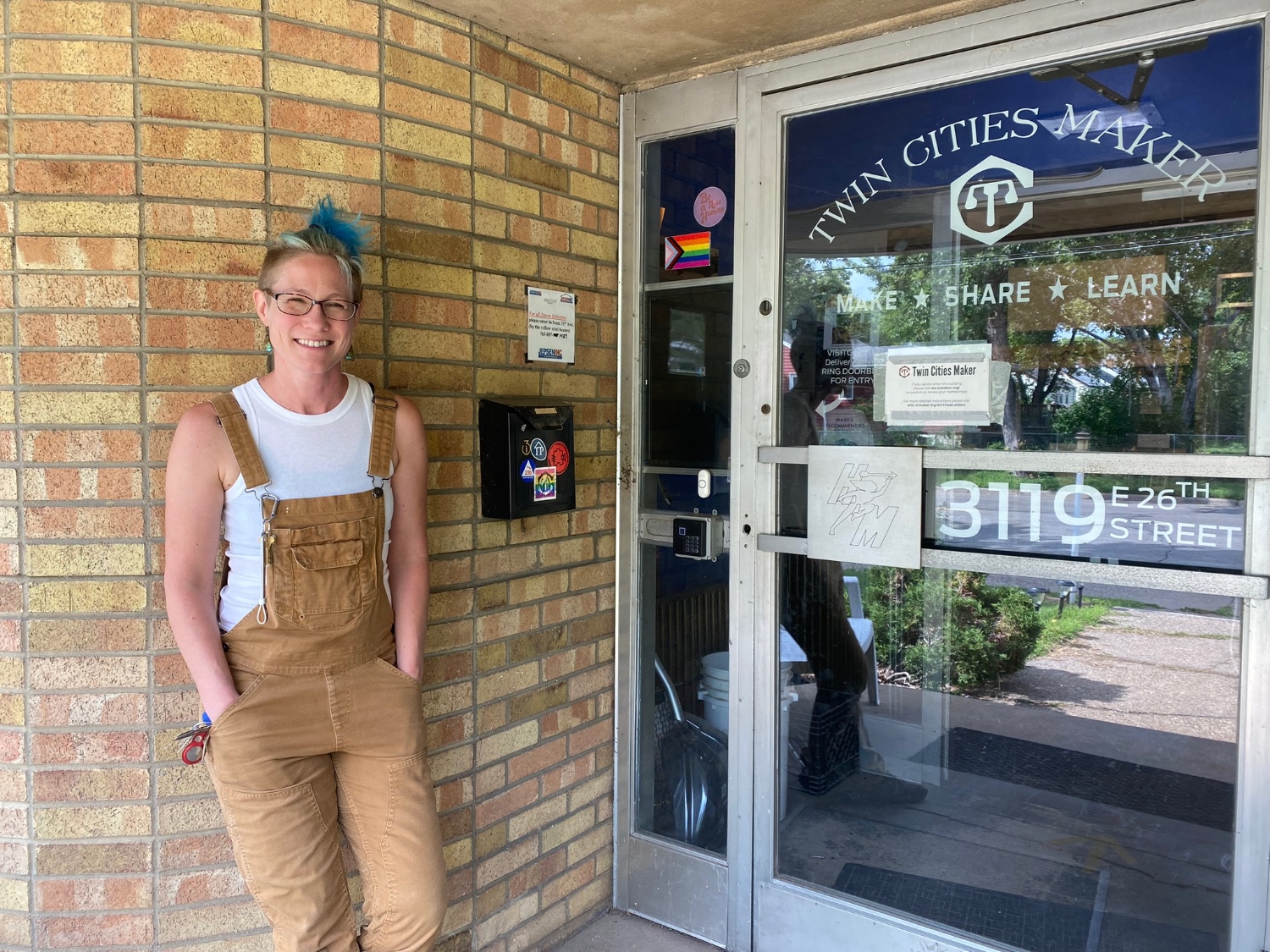
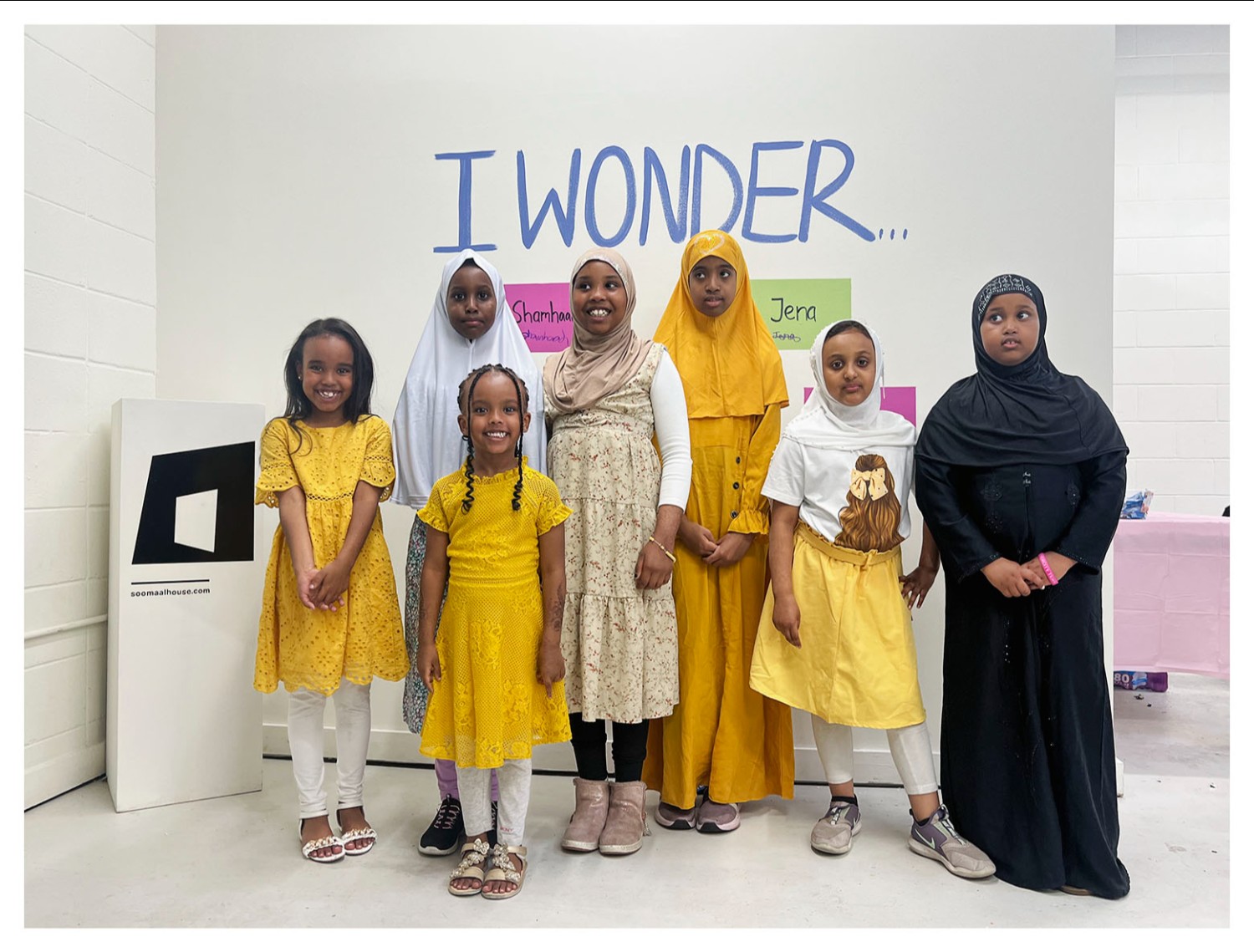
Top: Kat Cantner outside of Twin Cities Maker. Photo by Bridget Kranz. Bottom: Artists showing at Soomaal House of Art.
Over the past few months, we’ve sent our writers throughout the neighborhood in search of the arts, profiling everything from familiar mainstays like Northern Clay Center to places I knew nothing about like Praxis and Twin Cities Maker. We got to see glass get blown, clay get thrown, negatives get developed, and a community of scrappy, resourceful creatives just friggin’ make stuff across a variety of media. We got to see the same kind of mentorship that SPRAYFiNGER modeled show up as well in the programming at Articulture and Soomaal. And that’s leaving a whole lot out, I’m sure. There are printmakers like Aesthetic Apparatus and Bench Pressed; kid-focused programming like Pinwheel Arts and Movement Studio; and a host of independent artists who live and work in the neighborhood, hanging out at Seward Cafe or Memory Lanes, slapping up stickers along Minnehaha Ave, or shaking their head sadly when anyone brings up Tracy’s (RIP to a real one).
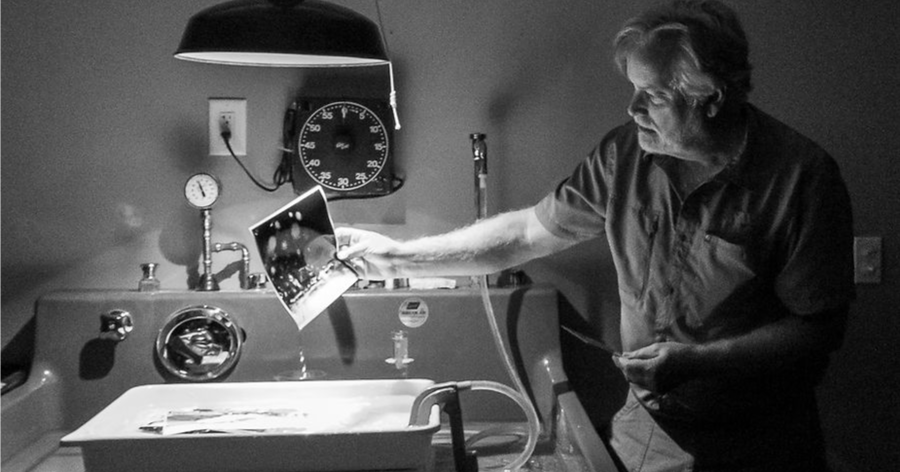
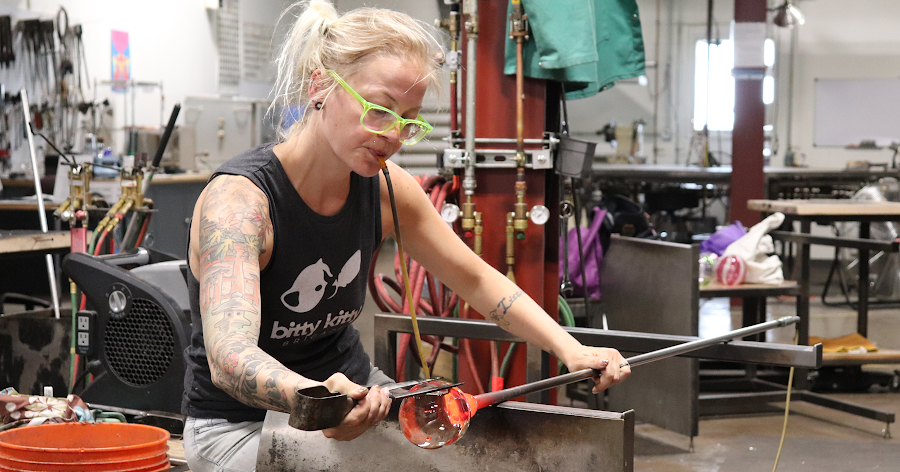

Top: Praxis Gallery & Photographic Arts Center. Middle: Foci Minnesota Center for Glass Arts, photo by Bridget Kranz. Bottom: Northern Clay Center.
Whether it’s your neighborhood or not, you gotta show Seward respect. It’s a proper bit of city — a dense collection of cultures cohabitating — and it has been a pleasure getting to know the place a little better with this series. It’s worth remembering that the walls and the borders we put up around our little enclaves are semi-permeable at best. Sometimes the wall is an opportunity instead of an obstacle, and there’s always a way to tunnel through, to meander around, or to just take a new turn for once and discover something all the locals have known about for years. Best case scenario: one of your homies is headquartered there, so you always have an excuse to visit.
Which brings me to the last arts outfit that we neglected to profile for the series: this one. MPLSART has operated out of Seward since at least 2014, when Katie and Blaine Garrett took the helm, steering the website towards what it is today. It’s all there in the name: this is a venture rooted in the importance of place, focused on the arts and culture of all the many neighborhoods that make up this city, the larger metro area, and occasionally the world outside these walls and borders.
Many thanks to the Seward Neighborhood Group for funding this series and to all of the artists, educators, and administrators for the work that they do. For the rest of you Seward tourists like me, go pay ‘em a visit sometime soon. Sign up for a class at Northern Clay, buy some glassware at Foci, take in a film screening at Soomaal, and all the art stuff, sure; but also take a stroll down Milwaukee Avenue, check out the beer selection at Zipp’s, maybe get some crab legs at Coastal Seafood. It’s all part of the same stew, the particular recipe that actually delineates one neighborhood from another, walls or not.
Seward, it’s been a pleasure. Where to next? ◼︎
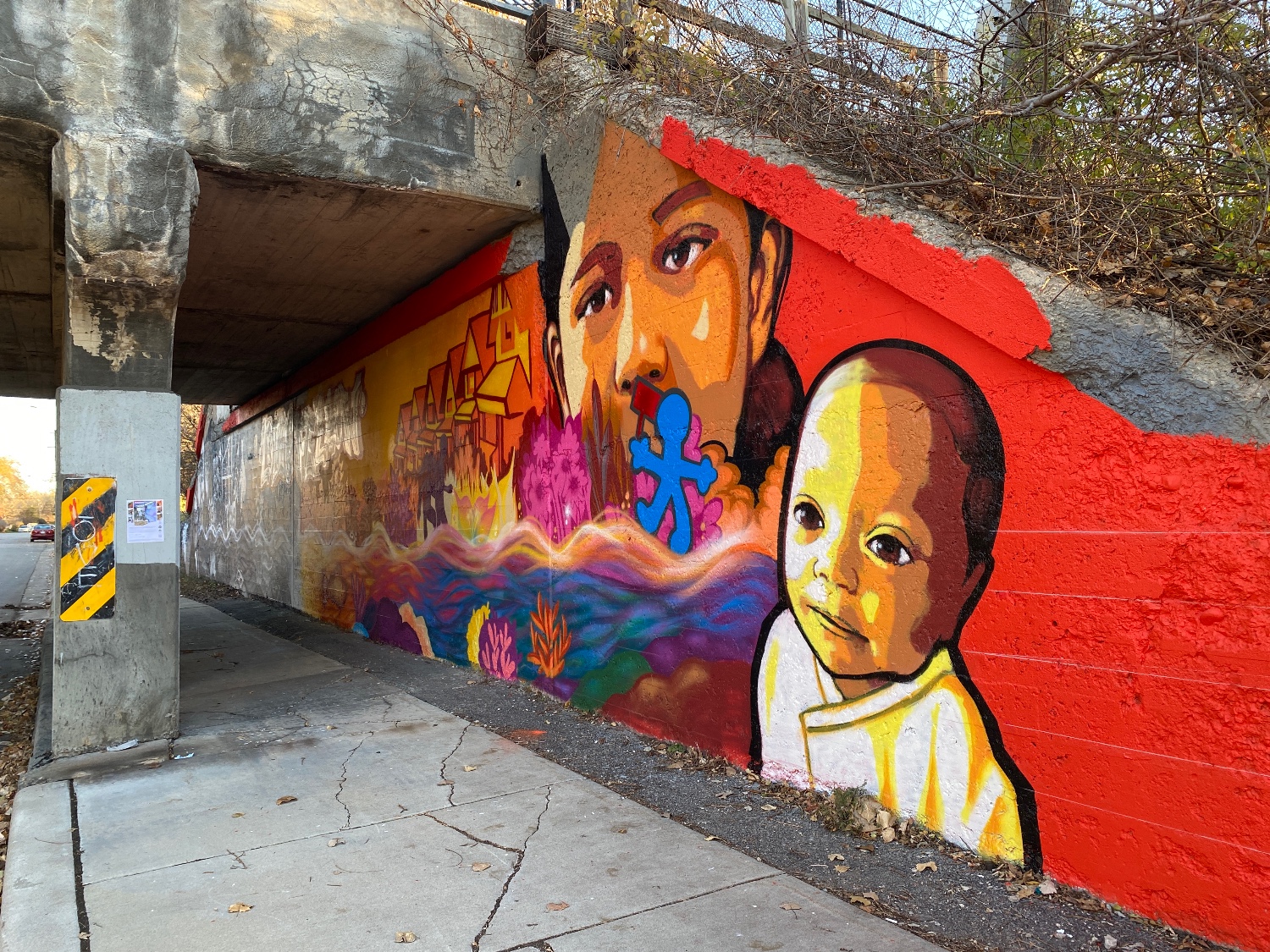
The River Memory mural at S 36th Ave, created by 36th Art. Photo by Russ White.
To read all of the articles in this series, visit Seward Neighborhood Profiles.
All photos courtesy of their venues unless otherwise noted. Banner image: The River Memory mural at S 36th Ave. Photo by Russ White.
We can't do it without you.
Help keep independent arts journalism alive in the Twin Cities.